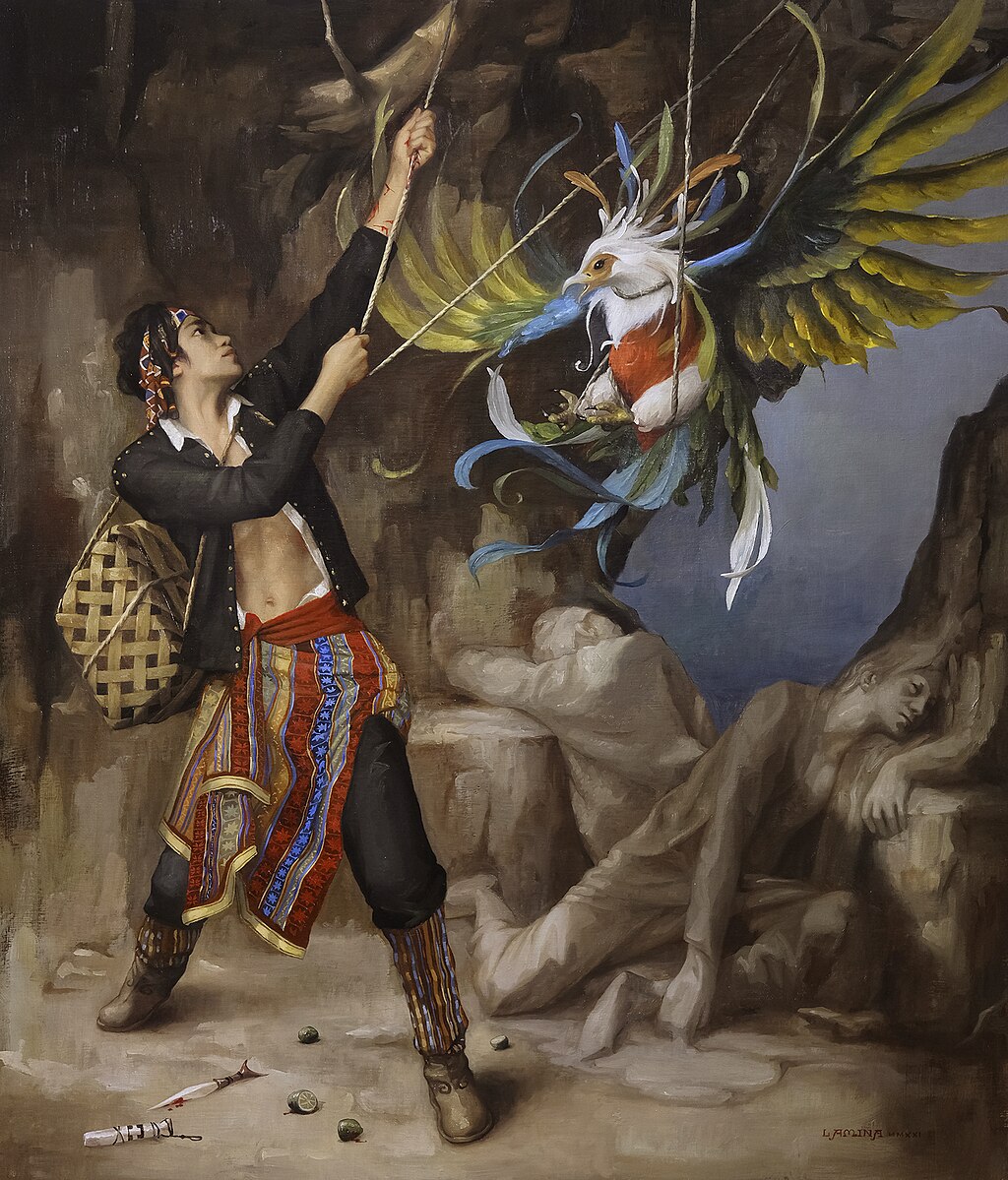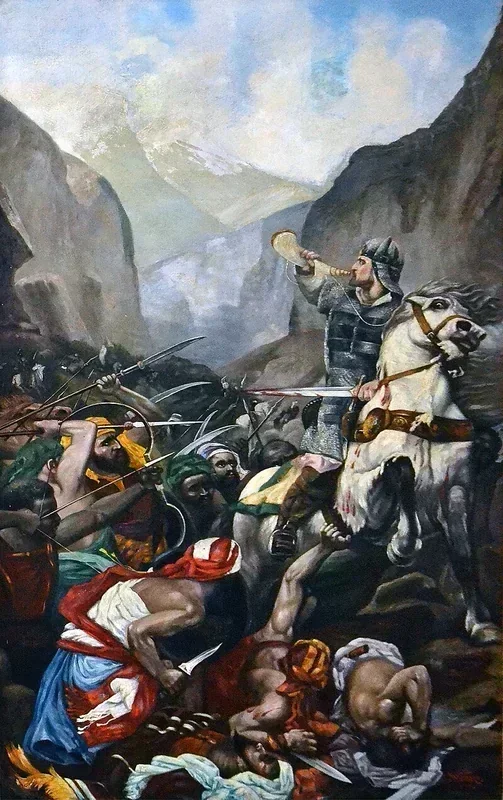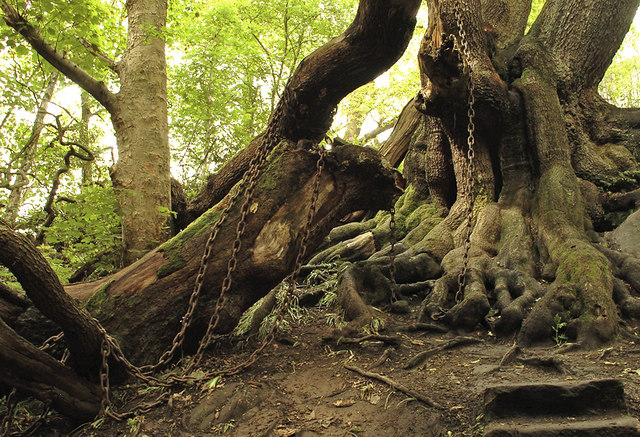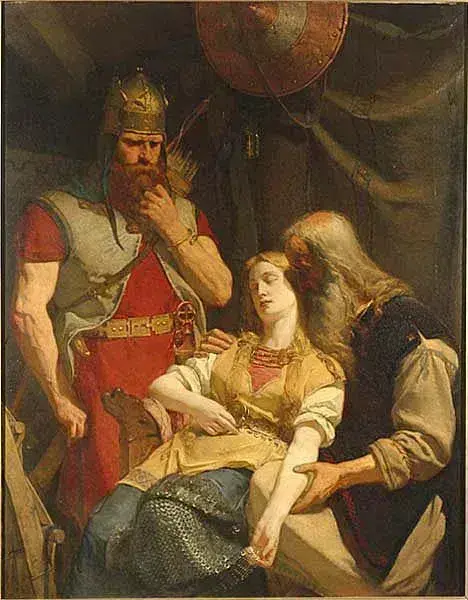Ibong Adarna

Ibong Adarna, also known as The Adarna Bird, is one of the most celebrated works of Philippine literature. This early 19th-century epic poem tells of a magical bird whose song possesses extraordinary healing powers. During the Spanish colonial era, its longer title was Corrido at Buhay na Pinagdaanan ng Tatlong Prinsipeng Magcacapatid na Anac ni Haring Fernando at ni Reyna Valeriana sa Cahariang Berbanya (“Corrido and Life Lived by the Three Princes, Children of King Fernando and Queen Valeriana in the Kingdom of Berbanya”). While the work is often attributed to the Tagalog poet José de la Cruz, or “Huseng Sisiw,” its true authorship remains unproven. Scholars continue to debate its origins. Contrary to the belief that it was introduced by Spanish colonizers such as Miguel López de Legazpi, some, including National Library assistant director Eulogio Balan Rodriguez in 1893, maintain that the story is pre-Hispanic in essence and rooted in indigenous Philippine storytelling. Even so, the epic shows clear influence from 19th-century European romances, with an atmosphere of medieval chivalry and a structure reminiscent of The Arabian Nights.
From these historical and literary roots emerges the tale itself, set in the Kingdom of Berbanya, where King Fernando and Queen Valeriana have three sons: Don Pedro, Don Diego, and Don Juan. One night, the king dreams of Don Juan’s murder and becomes gravely ill. News spreads that only the song of the mystical Ibong Adarna, which lives atop Mount Tabor, can cure him. Don Pedro is the first to set out, but upon finding the bird, he is lulled to sleep by its seven enchanting songs. The bird then defecates on him, turning him into stone. Don Diego follows and meets the same fate. Three years later, Don Juan embarks on his quest and encounters a hermit who warns him of the bird’s powers. The hermit provides him with a knife and dayap lemons to keep himself awake, a golden rope to capture the bird, and water to restore his brothers. Following the hermit’s advice, Don Juan captures the Ibong Adarna and revives Don Pedro and Don Diego.
The return to Berbanya, however, is far from peaceful. On the journey home, envy overcomes the elder brothers, and they beat Don Juan unconscious, presenting the bird to the king as their own prize. Don Juan survives and eventually returns, forgiving his brothers and asking his father to spare their lives. The king agrees, assigning all three princes to care for the bird. Yet the cycle of betrayal continues when the brothers release the Adarna while Juan sleeps, forcing him to flee in fear of punishment. His wanderings take him to Mount Armenia, where the brothers follow him and discover a deep well. Don Juan descends into it and rescues Princess Juana from a giant and Princess Leonora from a seven-headed serpent, but his brothers cut the rope as he climbs, abandoning him inside. Don Diego marries Princess Juana, and Don Pedro is promised Princess Leonora after seven years. Princess Leonora sends her magical wolf to heal Don Juan, who then continues his journey. Guided by the Adarna and an eagle, he reaches Reino de los Cristales, where he meets Princess Doña Maria and falls in love. Her father, King Salermo, opposes the match and assigns Don Juan seven impossible trials, all of which he passes. In anger, the king curses him to forget Doña Maria when he returns to Berbanya.
This curse shapes the final act of the story. Back in Berbanya, Don Juan becomes engaged to Princess Leonora, forgetting his love for Doña Maria. On the wedding day, Maria arrives disguised as a pilgrim and uses enchanted means to restore his memory. Reunited, they leave Berbanya together. Don Juan gives the kingdom to Don Pedro and Princess Juana, then returns with Doña Maria to Reino de los Cristales, where they marry and are crowned king and queen. The Ibong Adarna, described as the most colorful bird in Philippine folklore, is often compared to the Sarimanok of Mindanao and the phoenix, and some believe its appearance resembles the real-life Philippine trogon (Harpactes ardens), celebrated for its brilliant plumage.


